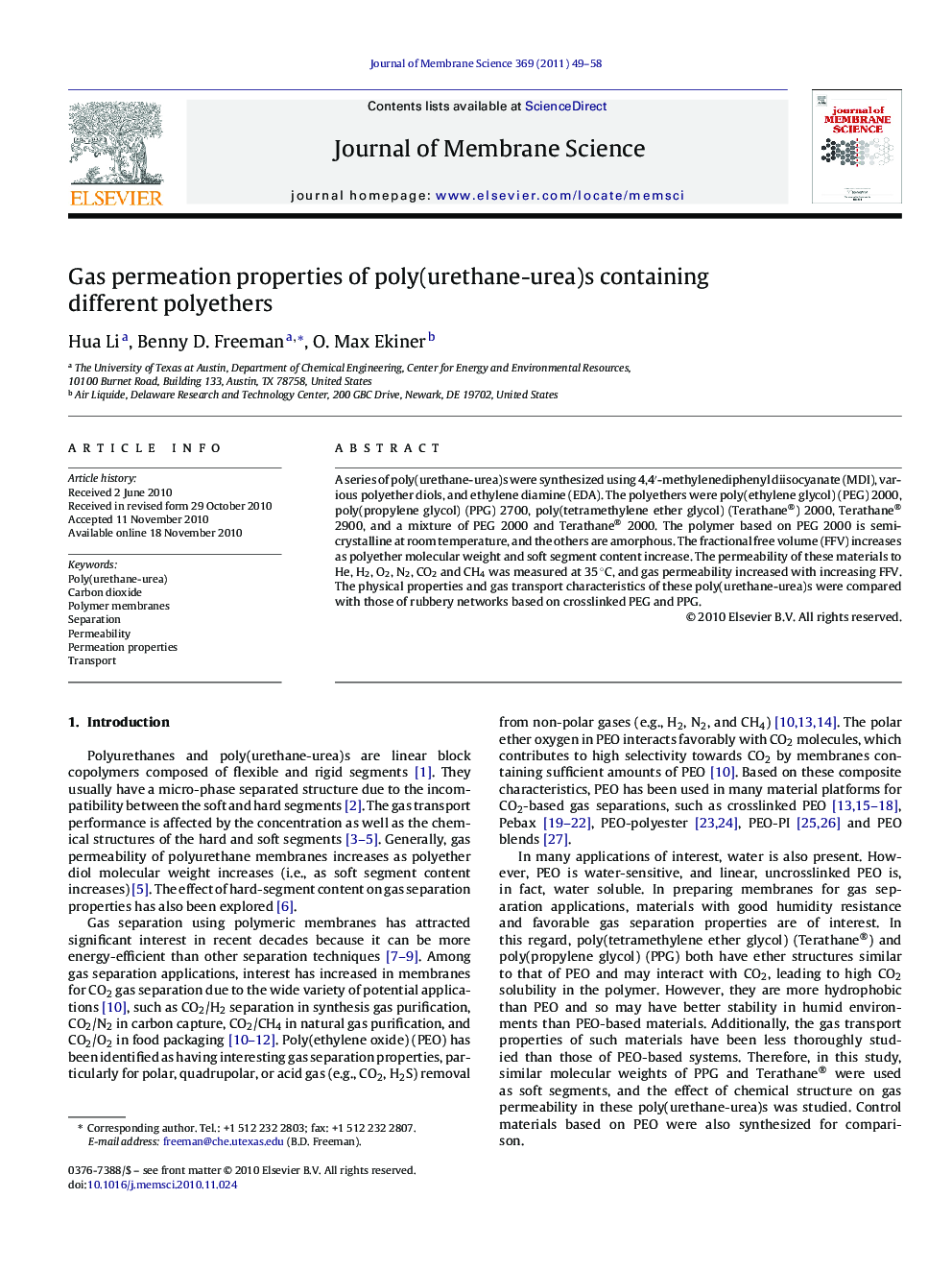| Article ID | Journal | Published Year | Pages | File Type |
|---|---|---|---|---|
| 635944 | Journal of Membrane Science | 2011 | 10 Pages |
A series of poly(urethane-urea)s were synthesized using 4,4′-methylenediphenyl diisocyanate (MDI), various polyether diols, and ethylene diamine (EDA). The polyethers were poly(ethylene glycol) (PEG) 2000, poly(propylene glycol) (PPG) 2700, poly(tetramethylene ether glycol) (Terathane®) 2000, Terathane® 2900, and a mixture of PEG 2000 and Terathane® 2000. The polymer based on PEG 2000 is semi-crystalline at room temperature, and the others are amorphous. The fractional free volume (FFV) increases as polyether molecular weight and soft segment content increase. The permeability of these materials to He, H2, O2, N2, CO2 and CH4 was measured at 35 °C, and gas permeability increased with increasing FFV. The physical properties and gas transport characteristics of these poly(urethane-urea)s were compared with those of rubbery networks based on crosslinked PEG and PPG.
Research highlights▶ We synthesized a series of poly(urethane-urea)s were using MDI and various polyethers. ▶ Polyether structure influences fractional free volume and gas transport performance. ▶ PPG and Terathane® based polymers have lower water uptake than PEG based polymers.
